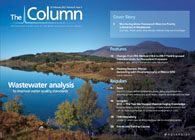Man's best friend
A recent discovery in the Atai mountains of southern Siberia has presented some of the oldest known evidence of dog domestication.
A recent discovery in the Atai mountains of southern Siberia has presented some of the oldest known evidence of dog domestication.1
The 33 000-year-old dog skull was found in a cave and was remarkably well-preserved. Skull, mandibles and teeth were present and it was possible to conduct a complete morphological description.
The team used an accelerator mass spectrometer to confirm the age of the skull by measuring the amount of radioactive carbon in a sample. They performed the experiment in three independent laboratories, which resulted in highly compatible ages, with an average of 33 000 years.
Together with a discovery in Belgium, this is the earliest incipient dog from Western Europe. Prior to this, practically all well-documented remains of early domestic dog come from the late Glacial and early Holocene periods (around 14 000–9 000 calendar years ago), with few found prior to the Last Glacial Maximum (around 26 500–19 000 years ago). The find in Belgium also helps to support the idea that dog domestication was multi-regional and had no single place of origin, as DNA data has suggested in the past.
1. Johannes van der Plicht et al., PLoS ONE, 6(7), e22821 (2011).
This story originally appeared in The Column. Click here to view that issue.
Regulatory Deadlines and Supply Chain Challenges Take Center Stage in Nitrosamine Discussion
April 10th 2025During an LCGC International peer exchange, Aloka Srinivasan, Mayank Bhanti, and Amber Burch discussed the regulatory deadlines and supply chain challenges that come with nitrosamine analysis.












